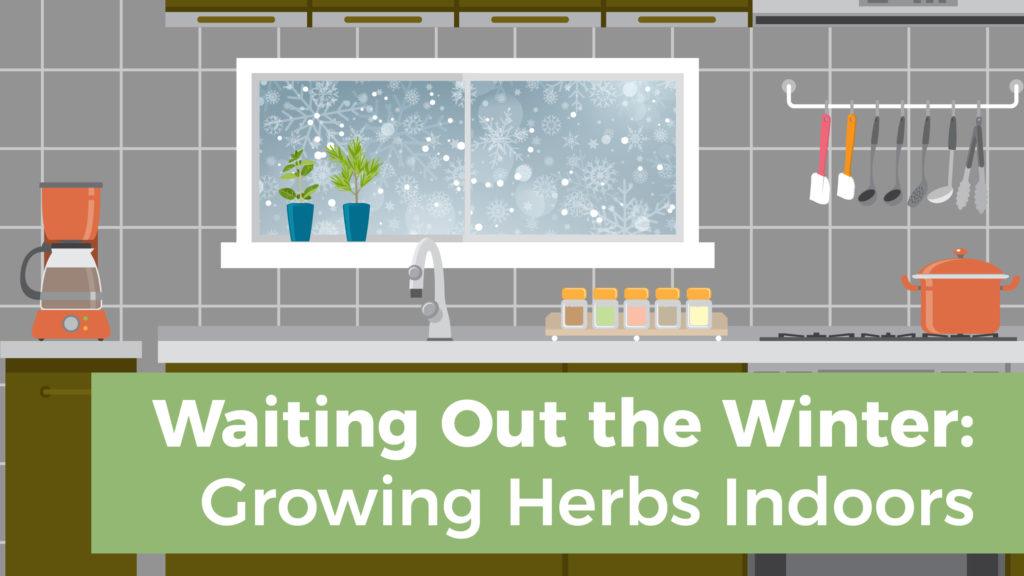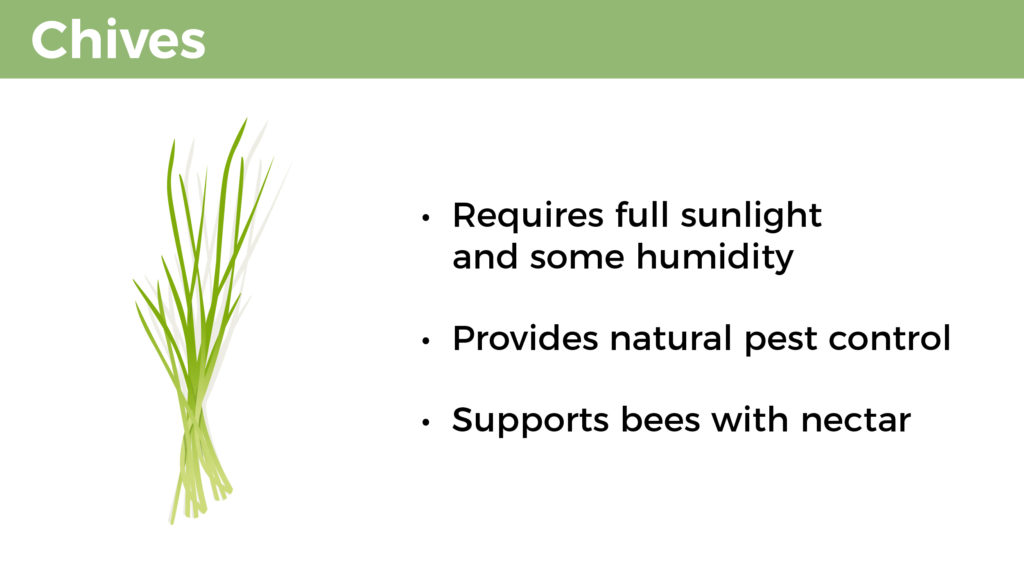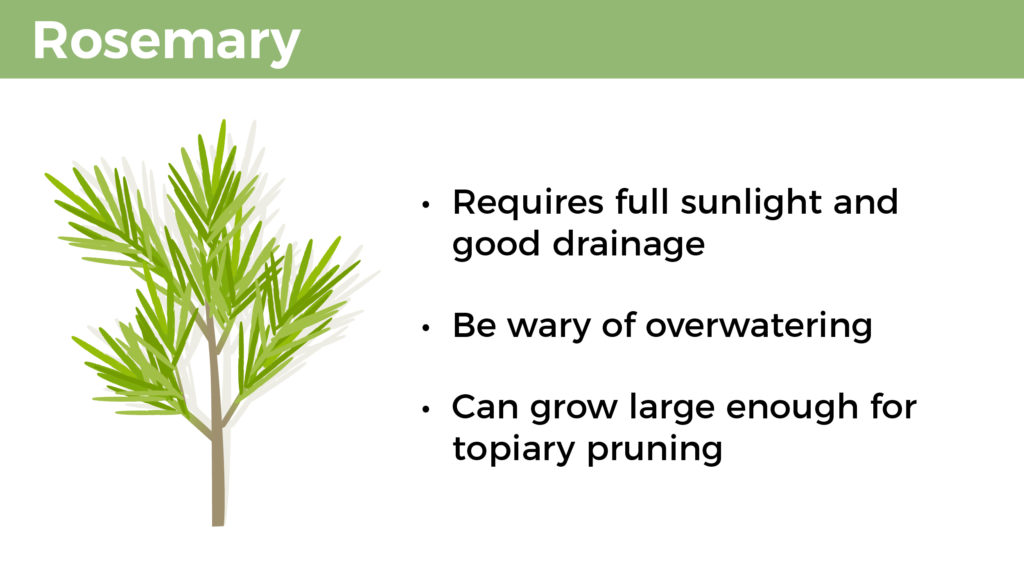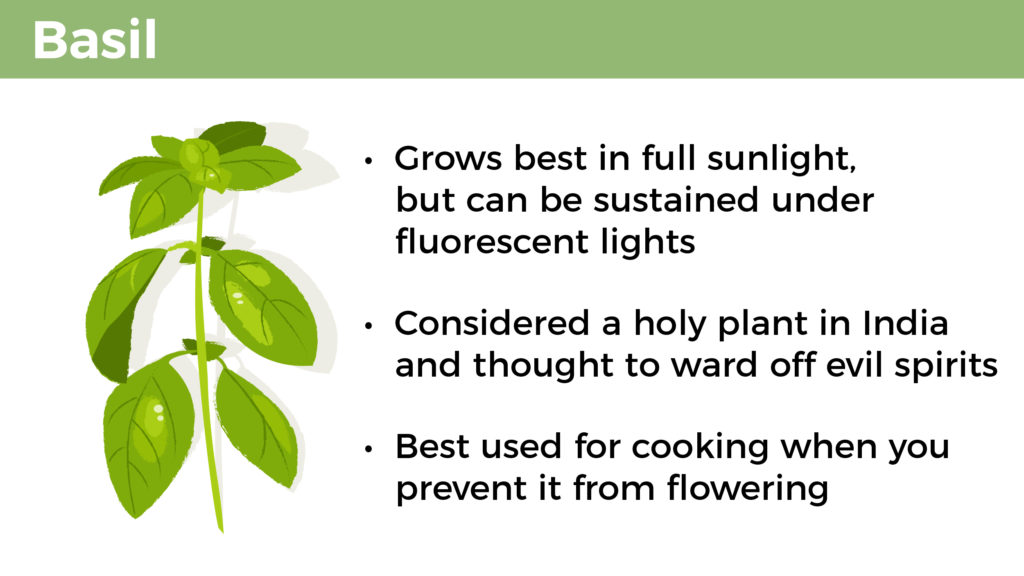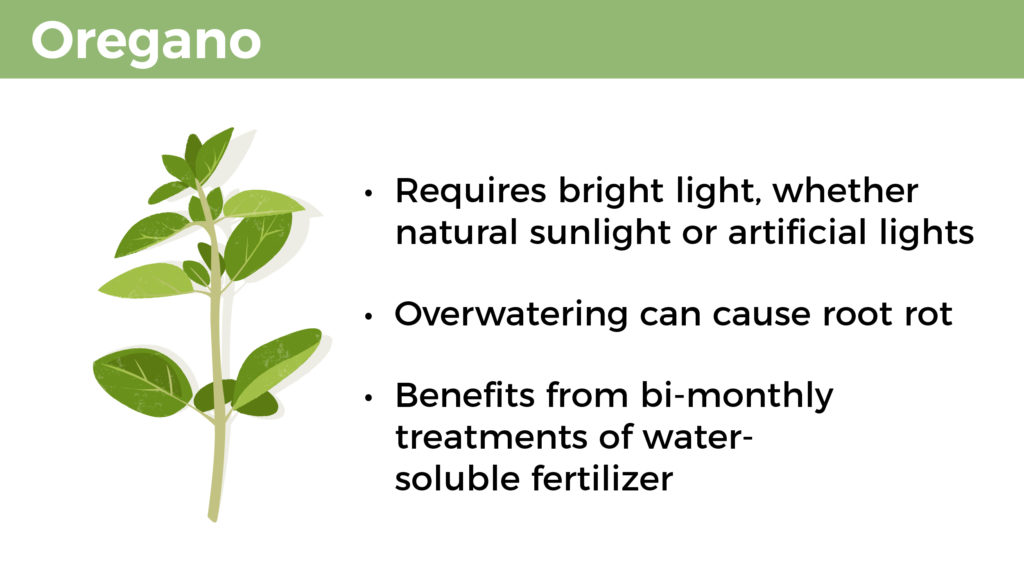Depending on where you live and what you’re trying to grow, winter may have thwarted your gardening abilities. Between less moisture and relative humidity, the potential for frost, and freezing ground, plants aren’t likely to prosper no matter what tactics you employ.
For diehard gardeners and novices alike, this season can seem like lost progress and feel like it lasts forever. But you don’t have to twiddle your green thumbs all winter long: Growing herbs indoors is a great way to keep your hobby thriving year-round.
Why Herbs?
Herbs are easy to care for and don’t take up much space, so you won’t have to give up your hot tea and cozy reading nook to keep the winter growing going. Herbs don’t need much – a small pot or even an empty mason jar, sunlight, and a little bit of water. They grow quickly, so you won’t have to wait months before you see your hard work pay off. And once they sprout, they’ll grow for a long time if properly nourished. When the weather starts to warm back up, you can even transplant them out to the garden.
Not only will herbs keep your growing skills up to par, but they are a cost-effective way of spicing up your life – literally! You’ll have a variety of fresh flavors, right in your kitchen. While you can buy dried herbs to use as seasoning, the flavors can’t compare to their fresh counterparts. Not to mention that winter dishes are usually perfect for an herbal dash – soups, pasta, meat, and other savory, warm meals. The satisfaction you experience growing your own organic produce is the same as that of cutting off a basil leaf to put into your stew.
Which Herbs Should You Plant?
Not all herbs could be right for you. Some need more sun, others more water, and even others just more tender love and care. Find out which ones will work for you and your home below.
Chives
Chives are a grass-looking herb and are commonly found in fish, potatoes, and soups. As a plant it is closely related to garlic, shallots, and scallions. It is the only plant in this family that is native to both Eastern and Western hemispheres. While most culinary dishes use the immature buds of chives, this plant does produce beautiful purple flowers atop long, slender stems that can be added to salads. As if the flavor wasn’t enough – they are considered one the fine herbs of French cuisine, after all – they also contain 18 vitamins and minerals.
To grow chives inside this winter, you’ll need a 6-inch pot filled with pre-moistened seed-starting potting mix. Then sprinkle a handful of seeds and cover them with additional moist potting mix. Be sure that there is plenty of drainage in the soil and that there is enough humidity around them; this can be done by placing your pot near other herbs, a water dish, or a humidifier. Because chives require full sunlight, it’s recommended that you place them in a South-facing window where they can get six to eight hours of sunlight a day.
Once they’ve sprouted, in two weeks or less, mist the leaves with a spray bottle and water when the soil is dry to the touch. When they’re ready to harvest, all you have to do is cut the stalks about two inches above the base. From there, you can chop them up and add them to your meal or dry freeze them for longer-keeping.
When spring arrives, chives can be planted in your garden, where they’ll act as a natural pest repellant while their bountiful nectar will support local bees.
Rosemary
As a member of the mint family, rosemary has a fibrous root system. It has evergreen hemlock needles and an aromatic, woody scent. You’ll find rosemary in dishes like your Thanksgiving stuffing, focaccia, and pizza. Considered sacred to ancient Egyptians, Romans, and Greeks, this fragrant herb sprouts white, pink, purple, and even blue flowers.
From the landscapes of the Mediterranean, rosemary is a resilient herb. It’s easily grown in pots and drought-tolerant. With that said, when you plant your rosemary, put it near a window for six to eight hours of sunlight with excellent soil for drainage. Be wary of overwatering your plants as it causes root rot, and during the winter, rosemary requires less water than normal. Unlike chives, rosemary requires better air circulation and less humidity, so letting a fan blow on it for a few hours can ward off mildew.
Rosemary can grow very large, so in the springtime, plant it in a larger pot outside, or in your garden to give it more space to grow. Its bush-like structure lets you prune your rosemary plants into shapes and hedges, or use it as a topiary. Next year when winter rolls back around, clip a shoot about six inches long, strip a few leaves from the bottom, and plant it directly into potting soil. Its roots will develop, and you’ll be able to preserve your herb inside.
Basil
There are many different varieties of basil. Genovese, or sweet, basil is commonly used in Italian food and has a sweet flavor and aroma. Thai basil is slightly spicy and more stable under high cooking temperatures, more often found in Southeast Asian cuisine. Lemon basil is grown primarily in northeastern Africa and southern Asia, named for its fragrant lemon scent. Regardless of the variety, basil is known as the “king of herbs,” used worldwide in culinary dishes. In India, most homes will have a holy basil plant, known as tulsi, placed in front of their homes, often in the middle of their yard; this is believed to keep away evil spirits and negative energies.
Basil can grow quite tall, over four feet, and produces light green, silky leaves and small white flowers. While it does best in a sun-facing window, it can be grown even under fluorescent lights. To start your herb inside, use a seed-starting potting mix to sow seeds about a fourth of an inch deep. You’ll need to keep the soil moist. After one or two weeks when the seedlings emerge, put your pot in a sunny window, or under fluorescent lights for 16 hours a day. It could be beneficial to apply a fast-start fertilizer after three to four weeks.
If you are growing your basil for culinary use, you’ll need to pinch off flower stems before they become fully mature. Flowering stops the culinary production of that stem and declines essential oil production that gives you the hearty flavor and aroma. If your plant is more for decoration, this step is not needed. When harvesting it, simply cut off a leaf and add it to your dish at the last moment as cooking can quickly destroy its flavor. Keep in mind that dried basil has lost most of its flavor and tastes more hay-like than your fresh basil plant will.
Oregano
From the mint family, oregano has a slightly fuzzy appearance on its leaves. It has purple flowers and spade-shaped leaves. You probably know its flavor from your favorite pizza sauce. U.S. soldiers returning from World War II brought oregano back with them after learning about southern Italy’s ‘pizza herb.’ But more than just flavoring your favorite tomato-based pie, oregano works well with spicy foods, as it has a slightly bitter, balsamic taste. It’s used to flavor everything from meats to sauces.
When growing your oregano, start with a small pot and a well-draining potting mix. It’s important to have proper drainage for oregano, as it is susceptible to root rot. From there, place your herbs in a bright light, whether sunlight or a plant light. Native to the Mediterranean, oregano benefits from having its soil dry out slightly between watering, while frequent trims encourage leaf production. For best results, apply a diluted water-soluble fertilizer every two weeks.
Oregano produces a lot of oils, so when dried, it actually has more flavor than fresh leaves, unlike basil. When you clip off leaves for cooking, make sure to use twice as much as you normally would with a dried seasoning.
Keep Growing Through the Winter with Jobe’s® Organics®
The end of growing season doesn’t mean the end of growing. Keep your gardening skills going with kitchen herbs this winter. Take advantage of our potting mixes and garden fertilizers that help you start and nourish your indoor seeds. Learn more about our lawn and garden collections to see what else you can use in preparation for spring.
